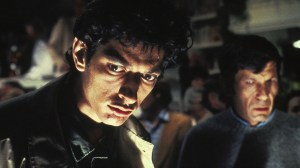
The debut of King Thor this week marks the beginning of the end writer Jason Aaron‘s run on the character of Thor and, in one fashion, the end of the Marvel universe. King Thor is set in the distant future, seemingly near the heat death of the universe, with Thor and Loki engaged in one last battle before the current closes on existence. It’s an appropriately epic conclusion for a story that has gone for so long, delivered so many big moments, and reshaped the Thor mythos forever.
Videos by ComicBook.com
Aaron’s run on Thor began almost seven years ago when, accompanied by artist Esad Ribic, the first issue of Thor: God of Thunder was released at the end of 2012. The first story set the stage for a sprawling conflict, introducing a trio of Thors (including a future King of Asgard and a young, less worthy god) and a deadly new villain (Gorr the God Butcher), but no one could have predicted just how extensive the plans for this story were. From that beginning, Aaron and his collaborators developed a run that rivals even the classic works of Walt Simonson, Jack Kirby, and Stan Lee—the most legendary combinations of creators, comics, and Norse gods so far. Reflecting on the past seven years of Thor, it’s clear that these stories will continue to resonate for decades to come and that Aaron has asserted himself as the master of the modern superhero epic.

Assembling the Team
This mastery didn’t emerge from a writer’s pen alone. Just as Lee couldn’t have transformed Fantastic Four into the great American novel without Kirby developing ideas and delivering the story, Aaron seems to have always appreciated how essential his collaborators are to each component of this run. While no single artist has overseen the entire seven year project, every phase of the project has been marked by a central visionary, an artist capable of designing iconic visions.
Ribic was the central artist for Thor: God of Thunder, providing a Heavy Metal aesthetic to some gritty adventures in the past, present, and future. He made Gorr appear as ugly on the outside as he was on the inside, and provided his simple appearance with plenty of power for destroying pantheons. Even when other artists came to the series for one-shot stories between the greater arcs, they appear to have been well chosen to fit the overall tone of the comic. The same thing was accomplished when artist Russell Dauterman refocused the series on Jane Foster in The Mighty Thor (and much of what was to follow). Dauterman, regularly colored by Matthew Wilson, delivered some of the most rich, detailed linework in any modern superhero comic. Everything was precise as the stories and their casts grew ever larger.
It’s apparent that Aaron has been working with some of the best artists at Marvel Comics throughout this run, and that those artists have been working with stories that suit their style. These partnerships have defined the stages of the run and given it the necessary coherence and style to remain memorable long after plot twists have lost their surprise.

Plotting the Arcs
Very few writers can comment on what it’s like to craft a superhero story within a shared universe over so many years, but it appears similar to the work of ancient generals, developing massive stratagems and then regularly changing them as so many ideas fall towards chaos. Perhaps the single most impressive accomplishment of Aaron’s run is that, even through Secret Wars and various other events, the stories of Thor are still easily read in order with clear segments within the larger story. For once Marvel Comics’ tendency to relaunch series was used to a creator’s advantage as each #1 provides a jumping on point to a new chapter of the story with a clear purpose and artistic approach. Even amidst a line-wide relaunch, Aaron’s Thor never lost its thread and managed to provide many epics that create a much larger mural.
When discussing Aaron’s run today, it’s natural to consider the story by the scope of its great events. Fans will discuss the early days as the “Gorr the God Butcher” stories, what comes next as “Unworthy Thor” followed by “Mighty Thor” or “Jane Foster Thor,” and then there comes the most-sweeping epic for a climax in “War of the Realms.” Great villains, including revitalized versions of Mangog and Malekith, offer each segment a big bad and plenty of other foes to fill the space before their defeat. These chapters add up to something much greater, but it’s only because there are clear chapters that it’s easy to re-read and discuss a story so massive without the narrative collapsing under its own weight. All that is left now is King Thor, one last chapter with a distinct sensibility ready to put a period on this epic.

Never Settling for Second
What’s apparent in every single one of those chapters is that Aaron and his collaborators never held back. If Thor: God of Thunder had not been a hit (as difficult as that is to imagine), then those stories of three Thors facing down Gorr would have remained a stand out selection, not a case of “what could have been.” When the series shifted gears to introduce Jane Foster as a new Thor, her own stories were impactful and seemed rarely, if ever, to consider when Thor might return. The War of the Realms itself could have served as an excellent final chapter, providing all of the spectacle readers could want from a war featuring almost every notable villain in Thor’s rogues gallery. Yet there’s still one story left to tell.
All readers can be certain of walking into King Thor is that it will not pull any punches and will strive to deliver an epic that lives up to the legendary figures its built upon (both in Norse mythology and comics). That’s not because it’s the end, but because it’s another chapter in a superhero epic that has never settled for second at any moment. While Aaron might have dreamed about telling a seven-year story with so many changes and great battles, he always focused on delivering the best possible comic each month. That is what makes the entirety of his Thor one of the best superhero runs ever created: entertaining, impactful, and iconic from the first issue until probably the last.








